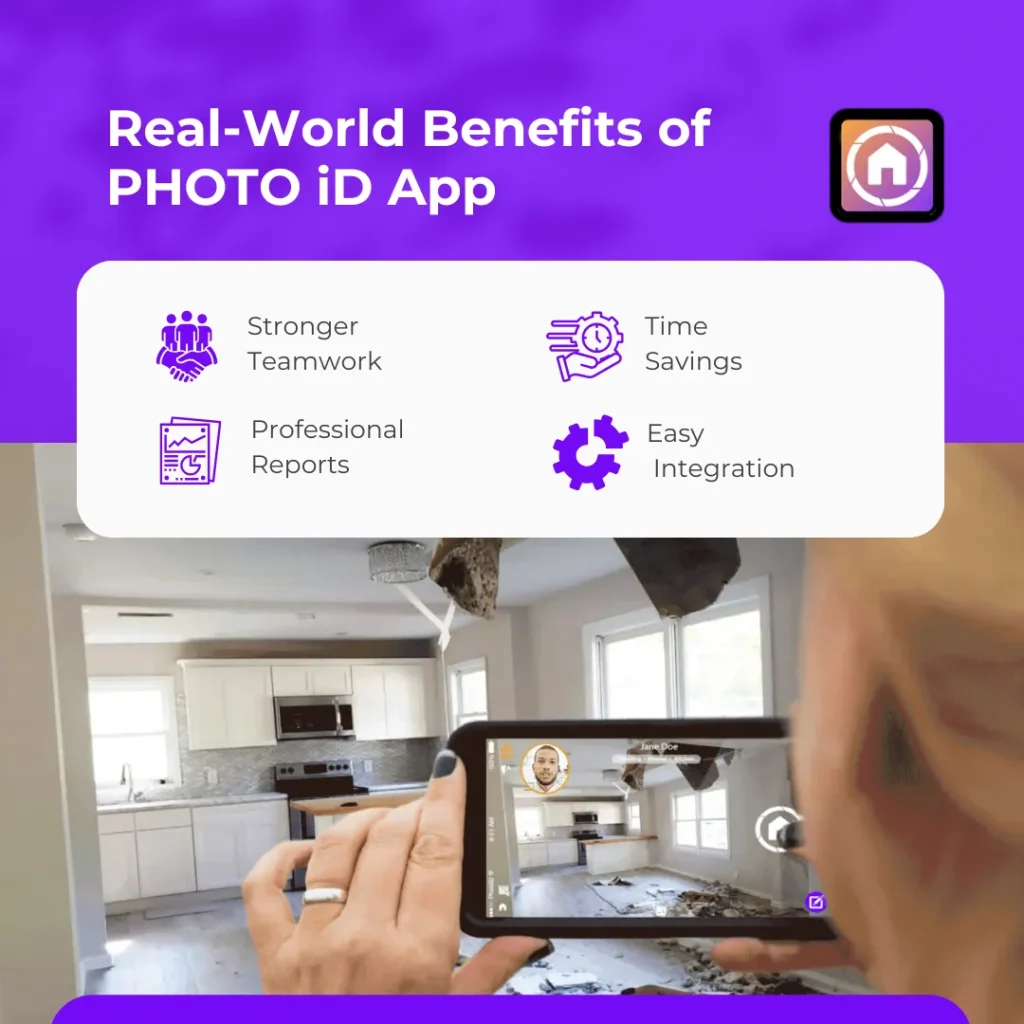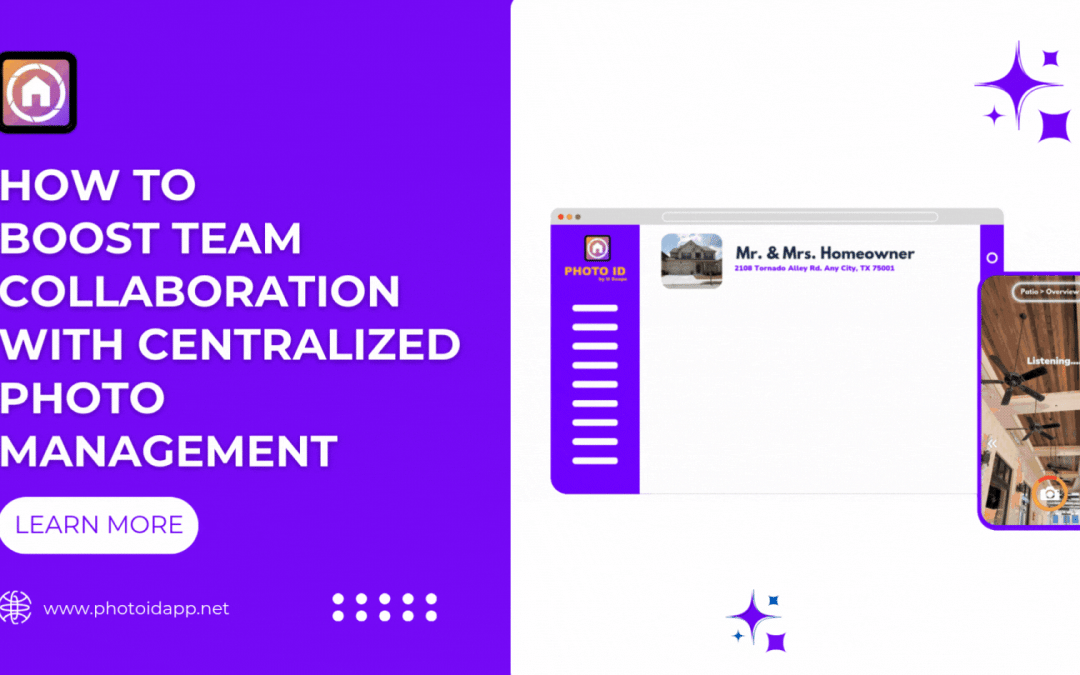In every workplace, communication is the foundation of teamwork. Without it, even the best plans can fall apart. When teams work across different sites or juggle multiple projects, photos often become the most valuable form of communication. A single photo can capture details that words might miss. It can show the exact condition of a property, the progress of a repair, or the outcome of an inspection.
But there is a catch. If these photos are scattered across phones, emails, and messaging apps, they quickly lose their value. What could have been a clear record turns into a confusing puzzle, and sorting them out would take ages. That is where PHOTO iD, a centralized photo management tool, changes the game. By bringing all images together into one shared system, teams can finally work in sync, reduce errors, and build trust in the process.
Let’s explore why scattered photos hold teams back, how centralizing them boosts collaboration, and what benefits your business can expect when you make the switch.
Why Scattered Photos Slow Down Teamwork
Let’s assume that a construction company is working on a roofing project. A field worker takes photos of the damaged shingles and sends them by text. Another team member emails shots of the repair work. A third person saves their photos to a personal cloud account. When the manager needs a full record to share with a client, they are stuck digging through messages, inboxes, and file folders.
This scattered approach creates several problems:
- Wasted time:Hours are lost trying to collect and organize photos from different sources.
- Missing context:Without labels, timestamps, or locations, it is hard to know what each photo represents.
- Miscommunication:If different people share different sets of photos, the story becomes unclear.
- Frustrated clients:Delayed or incomplete reports can erode trust with customers.
When photos live in multiple places, collaboration turns into chaos. Instead of focusing on the work itself, teams spend too much energy tracking down information.
How Centralized Photo Management Transforms Team Collaboration
Imagine the same project, but this time, every photo is stored in one shared system. The field worker’s images, the repair updates, and the manager’s final inspection shots all flow into a single, organized workspace. The result? Everyone speaks the same visual language.
This is how a centralized photo management approach helps:
- Creates one source of truth:All project photos live in a single, secure location. Teams do not have to guess where to look, they already know.
- Adds structure and accountability:Each photo comes with timestamps, geotags, and labels, ensuring clarity about what was captured, when, and by whom.
- Improves coordination:Managers, field staff, and clients can review progress in real time, reducing the back-and-forth that slows projects down.
- Saves time and energy: No more digging through chats or drives. With everything neatly organized, teams can focus on work that moves the project forward.
- Builds trust and transparency:A centralized visual record makes reporting easy and reliable, showing clear evidence of progress and results.
In short, centralizing photos does not just organize files, it organizes teamwork. It bridges the gap between the field and the office, ensuring everyone stays aligned and informed.
PHOTO iD: Turning Centralization into Seamless Collaboration
This is exactly where PHOTO iD steps in. Built specifically for teams that rely on visual communication, this app turns centralized photo management into an effortless, everyday habit.
With PHOTO iD, all images live in one secure location. Instead of chasing files, your team can focus on reviewing and collaborating. The process is simple: capture photos in the field and upload them directly to PHOTO iD, where they can be labeled, organized, and shared effortlessly. Once there, everyone (from managers to clients) can access the same clear record.
Let’s understand how it works:
- In the field:Workers use the app to snap photos, record notes, or even use voice-to-text labeling. Extra features like compass direction or roof pitch measurement help capture accurate details.
- Sync and share:Photos are uploaded to the cloud, where they are instantly available to the rest of the team. Even if someone is offline in the field, the photos sync once they reconnect.
- Organize and review:Managers can group photos by project, label them for clarity, and ensure every step of the work is documented.
- Create reports:With a few clicks, the labeled photos can be turned into professional reports that are easy to share with clients or partners.
By removing the messy trail of messages and folders, PHOTO iD keeps everyone on the same page — connected, confident, and fully aligned.
Real-World Benefits of PHOTO iD

1) Stronger Teamwork
When everyone can see the same photos in real time, collaboration feels effortless. Field workers do not have to worry about whether their photos reached the right person. Managers do not have to chase updates. The team works as a unit, confident that nothing is slipping through the cracks.
2) Time Savings
Instead of spending hours searching for files, teams can focus on actual work. That means projects move faster, deadlines are easier to meet, and clients are happier with the speed of communication.
3) Professional Reports
With PHOTO iD, creating polished reports is simple. No more copying photos into Word documents or juggling attachments. The system does the heavy lifting, giving clients clear, professional updates that build trust.
4) Accountability
Every photo has context. If there is ever a question about when or where something happened, the record speaks for itself. That accountability protects the team and provides peace of mind to clients.
5) Easy Integration
PHOTO iD connects with other platforms like CRMs, project management apps, or insurance systems. This makes it easier to fit photo management into your existing workflow without creating extra steps.
Everyday Examples across Industries
PHOTO iD is not just for one type of business; instead, it helps across different industries:
- Construction: Document progress on a job site, track repairs, and share updates with clients.
- Insurance: Capture clear evidence of property damage for claims, ensuring no detail is missed.
- Property management: Keep records of inspections, maintenance, and tenant changes in one place.
- Facility management: Track ongoing maintenance projects and create organized histories of work.
- Real estate: Provide transparent visual records of property condition during transactions.
In every case, the result is the same. Teams save time, reduce errors, and communicate with confidence.
The Ripple Effect on Clients and Partners
Collaboration does not stop with your team. When you deliver clear, organized reports to clients, you show professionalism and build trust. Clients feel more confident when they see transparent documentation. That trust leads to stronger relationships and more repeat business.
For partners, such as contractors or insurers, centralized photos create a smoother workflow. Everyone involved in a project sees the same record, which cuts down on disputes and speeds up decision-making.
Getting Started with PHOTO iD

Transitioning to PHOTO iD does not have to be complicated. Start small by identifying the biggest pain points in your current system. Are photos getting lost in emails? Are reports taking too long to prepare? Once you know the issues, you can look for tools that solve them.
It is also important to involve your team in the process. Field workers should feel comfortable using the app to capture and label photos. Managers should be trained to organize and review them. When everyone understands how it works, adoption is smoother and the benefits show up faster.
If your team is tired of chasing down photos and struggling with scattered files, it is time to make the switch. With the right tools in place, collaboration becomes natural and your projects run more smoothly from start to finish. Explore https://photoidapp.net/ to see how centralized photo management can simplify teamwork and boost productivity.
